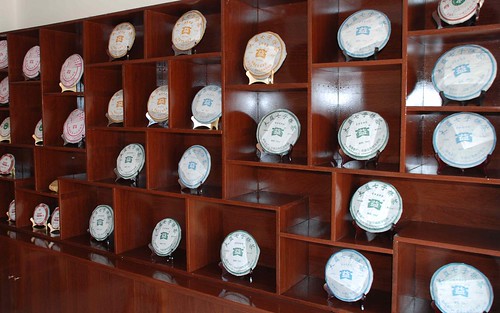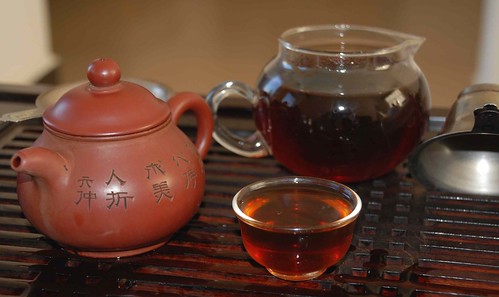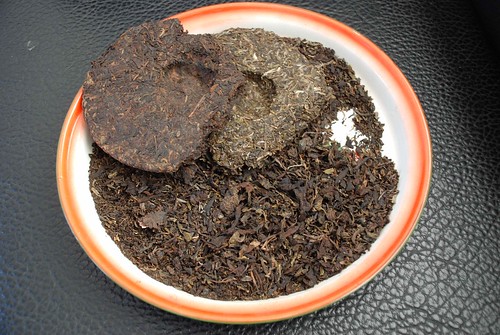
Buddha's Wisdom by Yu Yao
As some of you readers know, I have spent a lot of my time in the past few years translating and working in China’s hot contemporary art scene. The Chinese art scene is one of the most dynamic ones out there, and the story of how it came to rise out of the ruins of the Cultural Revolution makes it all the more fascinating.
But a growing number of people are starting to grumble about overly inflated prices and the increasingly unattainable status of premium artworks. The luminary figures who came of age and made their names in the eighties and nineties are among some of the richest living artists in the world. Many of the artists I know own private villas in the outskirts of China’s cities. Fang Lijun, one of China’s stars, is also the owner of a large and successful chain of chic restaurants, and Zhang Xiaogang, the superstar of the Chinese contemporary movement, last year became one of only five living artists on earth to have a piece auction for over two million dollars.
There are a lot of reasons behind this, and a lot of interesting stories to tell about this scene, but that will be for another article or articles. Basically what you need to know for now is that prices for good Chinese art are extremely high, and international dealers and auction houses have been flocking to Beijing and Shanghai over the past few years hoping to get in on the action. All eyes are on the auctions, as the standard business model seems to be to buy art on the cheap, create a buzz about the artist, and auction the stuff at Christie’s or Sotheby’s.
This was one of the main reason’s behind the Affordable Art Fair, which was held for the second time last month at Beijing’s 798 Art District by the local English listings magazine, TimeOut Beijing. The magazine staff brought together several local galleries to showcase work by promising young artists with a maximum price of 1,000 USD. With over 600 works on sale, the show was quite a success, as there are plenty of people in Beijing, myself included, who just want something nice for their apartment. If it can be sold for a profit a few years down the line, all the better.
I missed the opening day, so I missed out on some of the better works. I was actually feeling a bit disappointed, until I made my way to the back of the gallery and ran into Jessica and Tony from the Amelie Gallery (www.longyibang.com). They impressed me not only because they were actually there and actively involved even on an off day, but because of the philosophy behind their gallery.

Opera Actress by Zheng Yukui
As a matter of principle, the Amelie team shies away from the expo and auction scenes, preferring to take a hands-on approach to nurturing and promoting promising artists with depth of vision and a new approach to their art. They also deal almost exclusively with artists in the affordable range, ie stuff they can sell for less than 2,000 USD.

Girls by Li Jinru
They showcase a lot of young contemporary artists who either use traditional media such as woodcut and silkscreen, or are blazing into new territory such as cartoon and graphic design. They also focus a lot of effort on what they choose to call Chinese Neo-Classicism. The sculptors, photographers, painters and printers in this field all show an amazing breadth of knowledge in ancient Chinese cultural traditions, and are taking them in new directions, from Zheng Yukui, who sculpts women in contemporary styles but according to the traditionally revered body-type (no anorexic models here), to Yu Hang, a female artist who body-paints her model in traditional Chinese motifs and photographs her strutting through Chinese cultural memory. The gallery also highlights folk art masters in paper-cutting, embroidery and sculpture, bringing living folk art to the status it deserves as fine art.
The mantra at Amelie is ‘making social progress through art’. They are of course in the business to make money, but for them it’s more than that. Tony has a master’s degree in art from London, and Jessica is deeply grounded in business and client management. They are here for the long run, for the art, and not just to make some quick millions under the auction hammer. I plan to be seeing a lot more of them in the future, and not just to check up on the artists I’ve collected. Besides, I’ll probably never be able to afford the artists I translate for anyway.
In other art news, the final manuscript for my translation of “Huajiadi” has reached my hands. If all goes well, the book should be off the presses this fall. This book, by Tang Xin, talented female curator and artistic director for Taikang Life Insurance, traces through interviews the experiences of China’s top artists as they grew and developed from 1979 to 2005. It is already a very important work in the Chinese art world, and I can only hope that my translation is good enough to do the same for the English speaking world. More on that later.
Above images courtesy of Amelie Art Gallery.



